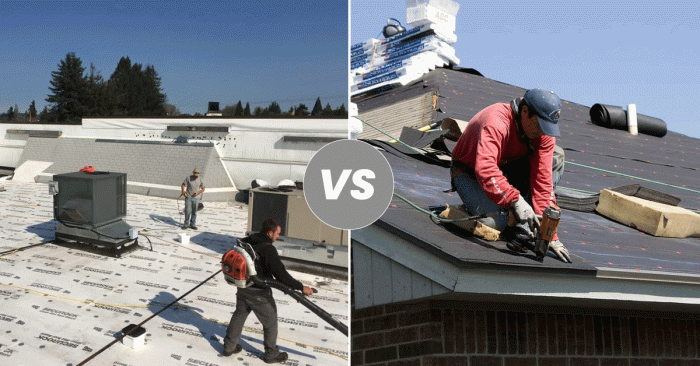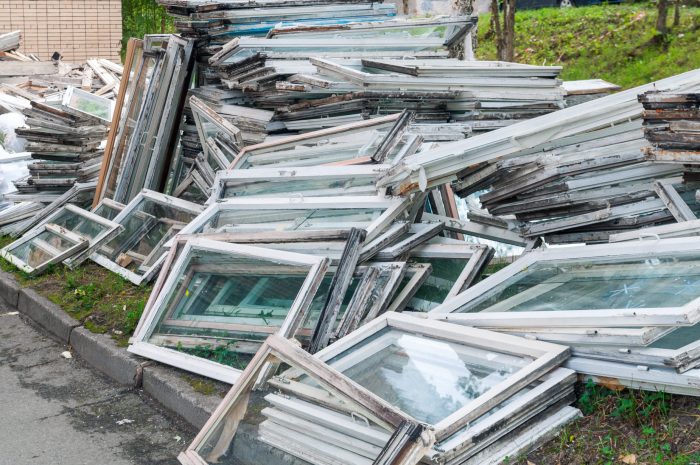Commercial vs Residential Roofing: Main Differences
When it comes to roofing, the distinction between commercial and residential structures plays a crucial role in determining the design, construction, and cost considerations. Understanding the main differences between commercial and residential roofing is essential for making informed decisions in the realm of property management and real estate.
Exploring the nuances of design, structural variances, cost considerations, and environmental impact in commercial versus residential roofing provides valuable insights into the intricacies of these two distinct sectors of the construction industry.
Structural Variances
When it comes to roofing, the structural variances between commercial and residential buildings play a crucial role in determining the type of roof that is most suitable for each. These differences impact everything from design to materials used and load-bearing capacities.
Building Codes Influence
Building codes have a significant impact on the design and construction of both commercial and residential roofs. These codes dictate the specific requirements for each type of building, including the materials that can be used, the slope of the roof, and the overall structural integrity.
Commercial buildings often have stricter building codes to ensure the safety and durability of the structure due to the larger scale and higher occupancy levels.
- Commercial roofs are typically required to have a higher fire rating compared to residential roofs to minimize the risk of a fire spreading throughout the building.
- Residential roofs, on the other hand, may have more flexibility in terms of design and materials, as long as they meet local building codes for safety and structural stability.
Load-Bearing Requirements
One of the key differences between commercial and residential roofs is the load-bearing requirements. Commercial buildings often have to support heavier loads due to the size of the structure and the equipment housed within. This means that commercial roofs need to be designed to withstand greater weight and stress compared to residential roofs.
Commercial roofs may need to accommodate HVAC units, communication equipment, and other heavy machinery, requiring a sturdier structure and foundation.
- Residential roofs, on the other hand, typically only need to support the weight of the roof itself, along with minimal snow and wind loads.
- Residential roofs are designed with lighter materials and simpler structures compared to commercial roofs.
Cost Considerations
When it comes to roofing projects, cost considerations play a significant role in decision-making. Whether you are opting for commercial or residential roofing, understanding the financial implications is crucial for planning and budgeting effectively.
Cost Factors in Commercial Roofing
- Size of the Roof: Commercial roofs are typically larger than residential roofs, which can impact the overall cost of materials and labor.
- Materials Used: Commercial roofing often requires more durable and specialized materials, which can be more expensive than those used for residential roofing.
- Accessibility: Due to the height and complexity of commercial buildings, accessing and working on the roof may require specialized equipment and safety measures, adding to the overall cost.
- Installation Complexity: Commercial roofs may have unique features such as HVAC systems, skylights, or drainage systems that require additional expertise and labor, leading to higher costs.
Financial Implications of Residential vs. Commercial Roofing
- Initial Investment: While residential roofing projects may have lower upfront costs compared to commercial roofing, commercial roofs tend to have a longer lifespan and may require less frequent replacements, potentially balancing out the initial investment over time.
- Long-Term Maintenance: Residential roofs may require more frequent repairs and maintenance due to exposure to the elements, whereas commercial roofs with higher-quality materials and installation may have lower maintenance costs in the long run.
- Insurance and Liability: Commercial properties often have higher insurance premiums due to the larger scale and potential risks, which should be factored into the overall cost considerations.
Long-Term Maintenance Costs
- Residential Roofing: While initial costs may be lower, residential roofs may require more frequent inspections, repairs, and replacements due to wear and tear from weather conditions, potentially leading to higher long-term maintenance costs.
- Commercial Roofing: With proper installation and maintenance, commercial roofs can have a longer lifespan and lower maintenance costs over time, making them a cost-effective choice for property owners looking for durability and longevity.
Environmental and Energy Efficiency
When it comes to roofing materials, the environmental impact and energy efficiency play a crucial role in determining the sustainability of a building. In this section, we will explore the environmental impact of commercial roofing materials, discuss energy-efficient options available for residential roofs, and compare sustainability practices in commercial and residential roofing industries.
Environmental Impact of Commercial Roofing Materials
Commercial roofing materials can have a significant environmental impact due to the large surface area of commercial buildings. Some common commercial roofing materials, such as single-ply membranes, metal roofs, and asphalt shingles, may contain chemicals or materials that can harm the environment during production, installation, and disposal.
It is essential for commercial property owners to consider eco-friendly roofing options that are sustainable and have a lower carbon footprint.
Energy-Efficient Options for Residential Roofs
Residential roofs can benefit from energy-efficient options that help reduce energy consumption and lower utility bills. Some energy-efficient roofing materials include cool roofs, solar panels, and green roofs. These options can help regulate indoor temperatures, reduce the heat island effect, and even generate renewable energy.
Homeowners should consider these eco-friendly alternatives to make their homes more sustainable and energy-efficient.
Comparison of Sustainability Practices
Sustainability practices in the commercial and residential roofing industries differ based on the scale of the projects and the materials used. Commercial roofing projects often involve larger roofs and more extensive materials, requiring careful planning and implementation of sustainable practices.
On the other hand, residential roofing projects focus on individual homes, where homeowners can choose energy-efficient materials and practices to reduce their environmental impact. Both industries are increasingly adopting green building standards and certifications to promote sustainability and environmental responsibility.
Conclusion

As we wrap up our discussion on the disparities between commercial and residential roofing, it becomes evident that each sector presents unique challenges and opportunities. By delving into the intricacies of design, structural variances, cost considerations, and environmental impacts, we gain a deeper appreciation for the complexities of the roofing industry and the importance of making informed decisions when it comes to property management.
FAQ Guide
Is the construction process significantly different between commercial and residential roofing?
Yes, commercial roofs are often flat or low-sloped, requiring different materials and construction techniques compared to the sloped roofs commonly found in residential buildings.
How do building codes affect the design of commercial and residential roofs?
Building codes dictate specific requirements for both commercial and residential roofs, influencing factors such as materials, structural integrity, and safety standards.
What are some common materials used in commercial roofing?
Materials such as EPDM, TPO, and metal are frequently used in commercial roofing due to their durability and weather resistance.
Are there energy-efficient options available for residential roofs?
Yes, residential roofs can incorporate technologies like solar panels and cool roofs to enhance energy efficiency and reduce environmental impact.
How do long-term maintenance costs compare between commercial and residential roofs?
Commercial roofs often have higher maintenance costs due to their size and complexity, while residential roofs may require less frequent maintenance but can still incur expenses over time.



